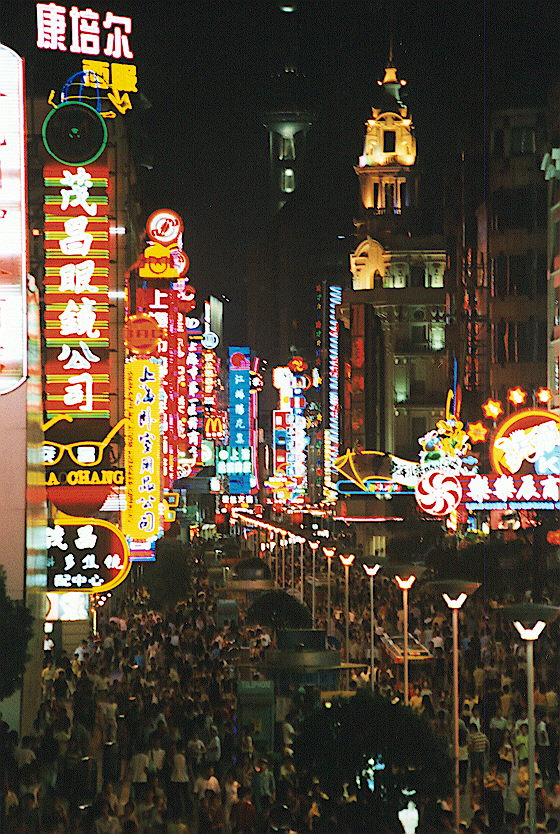





| |




|
|
Lacated
at the eastern part of China, Nanjing is the capital of
jiangsu Province which is developed in economy in China
and an important central city on the middle and lower
reaches of the Yangtse River. |
|
Nanjing is situated on the
vast plain of the lower reaches of the Yangtse River and
at 32°03'N, 118°47'E. It belongs to the northern
subtropical monsoon climate zone where the four seasons
are clearly demarcated, the annual mean temperature is
16℃, the annual even precipitation is 1,106 mm and the
frost-free period is 237 days.At present, Nanjing has
jurisdiction over 10 districts and 5 counties,covering
an area of 6,516 square kilometres and having a
population of about 5,200,000. |
|
|
|
Nowadays, Nanjing has
developed into a multiple-producing industrial base in
eastern China, an important hub of transportation and
communication center, one of China's four major
scientific research and educational central cities. The
gross national products of the whole city in 1995
amounted to 58 billion yuan, a 12% increase over the
previous year. |
Industry
Nanjing is an important
industrial base of China where a multi-producing industrial
system taking electronics, automobiles, chemicals and a number
of special products as the leading factors and having 36
industrial trades, over 200 industrial branches and more than
2,000 categories of products have been established. The
industrial output value of the whole city in 1995 amounted to
81,800 million yuan, a 24.4% increase over the previous year,
and the ratio of output to sales reached 96.4% which took the
lead throughout the province.
Commerce and Finance
Nanjing is a major
international commercial port in the Yangtse delta region,
second only to Shanghai. The total turn over of retail sales of
the social consumer goods in 1995 amounted to 24 billion yuan, a
27% growth over the previous year, ranking among ten major
cities of the country. The monetary market plays an important
controlling role in the economic operation of the city.
Transportation and Communication
Five means of transportation
such as railway, waterway, air transport and piping constitute a
three-dimensional and mass transport volume traffic network in
an all-round way. Nanjing Port is a port for foreign trade
leading to the ocean. The port area is 98 kilometres in full
length and has 64 berths including 16 berths for ships with a
tonnage of more than 10,000. Within the boundary of Nanjing,
there are over 60 highway long-distance passenger traffic lines
leading to all parts of the province; the Tianjin-Pukou,
Shanghai-Nanjing and Nanjing-Wuhu Trunk Railways meet in Nanjing
which has become an important hub of railways linking north
China, east China with central China. After extension, the
Nanjing Airport has more than 20 air lines leading to all major
cities in the country. With the start of construction of the new
airport,Nanjing will have an international modernized airport.
Being one of six major telecommunication hubs in the country,
Nanjing has a telecommunication network which is composed of
multiple modes and linking with all parts of the country and all
countries in the world.
International Contacts
Nanjing is well known at home
and abroad. Now it has entered into amical relations with Nagoya
of Japan, Florence of Italy, Saint Louis of the United States,
Eindhoven of the Netherlands, Leipzig of Germany, Mecicali of
Mexico, Limassol of Cyprus and Daijun of the Republic of Korea
to make an extensive exchange and cooperation in the fields of
economy, trade, science and technology and culture, and joined
the Transpacific Technical cooperation Network as one of two
member cities from China.
Foreign Economic Relations and Trade
|
|
The total purchasing value
of commodity for foreign trade in 1995 amounted to 6.718
billion yuan, a 41.5% growth over the previous year; the
delivery value of export commodity for foreign trade
amounted to 8.4 billion yuan, up 40%; the actual export
amounted to 0.808 billion |
US dollars, up 46.4%. By the end of 1995, 4119 foreign-invested
enterprises in tatal have been approved by the government of
Nanjing City, including 663 enterprises newly-approved in 1995
and the foreign investors in Nanjing came from 50 countries and
regions. The contracts for construction projects abroad and
cooperation of labour service in 1995 amounted to 64.84 million
US dollars,up 43.6%. 68 non-trading units have been established
abroad.
Science and Technology
In Nanjing there are over 460
natural science research institutions with more than 320,000
technical personnel of different specialities and over 40 social
science research institutions with more than 50,000 researchers.
The scientific and technological strength thereof ranks third in
the country. 291 major achievements have been made in the fields
of science and technology throughout the city in 1995, of which
6% are up to the international standard and 42% are up to the
domestic advanced standard.
Tourism
Nanjing is very rich in natural
and artificial landscapes and one of the first 24 well-known
historic and cultural cities announced by the state. Dr.Sun
Yat-Sen's Mausoleum, the Ming Tomb, the King Palace of Taiping
Heavenly Kingdom, the ancient city wall of Nanjing, the stone
carvings of Southern Tang Dynasty, Pagoda for Buddist Relics,
the Tombs of Southern Tang Emperors, the Rain Flower Terrace,
the Mural Painting in Tangzi Street and other places are the
main scenic spots and historic sites. The Eastern Suburbs Scenic
Area, the Qixia Mountain, the Xuanwu Lake, the Mochou Lake, the
Qinhuai River Scenic Belt and other scenic areas are well-known
far and near. Among them, Dr. Sun Yat-Sen's Mausoleum and the
Qinhuai River Scenic Belt are among 40 best tourist scenic spots
in China. There were over 220,000 tourists from abroad in 1995.
|

|